The capital of Vietnam is one of Asia’s most visited cities. Found in the centre of the country and perched on the banks of the Red River, Hanoi is sometimes referred to as the Paris of the East thanks to an atmosphere that is equal parts cultural and cosmopolitan. But one of its main charms is definitely its extensive and multi-faceted history that has given birth to fascinating museums and temples. In between visiting the modern day shopping malls and eating some of the best Vietnamese food the country has to offer, make sure you stop by these impressive relics.
Temple of Literature
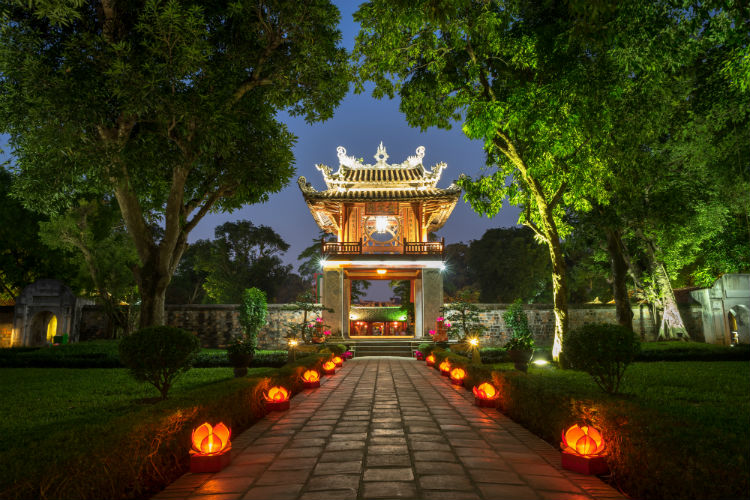
This Confucian temple was founded in 1070 by Emperor Ly Thanh Tong and is the site of Vietnam’s first university, established here in 1076, when entrance was only granted to those of noble birth. Inside you’ll find statues of Confucius and his disciples, steles with inscriptions of the names of distinguished scholars, a pavilion dedicated to the Constellation of Literature, plus the Well of Heavenly Clarity.
You’ll find the temple on Van Mieu Street, about two kilometers from Hoan Kiem Lake.
National Museum of Vietnamese History
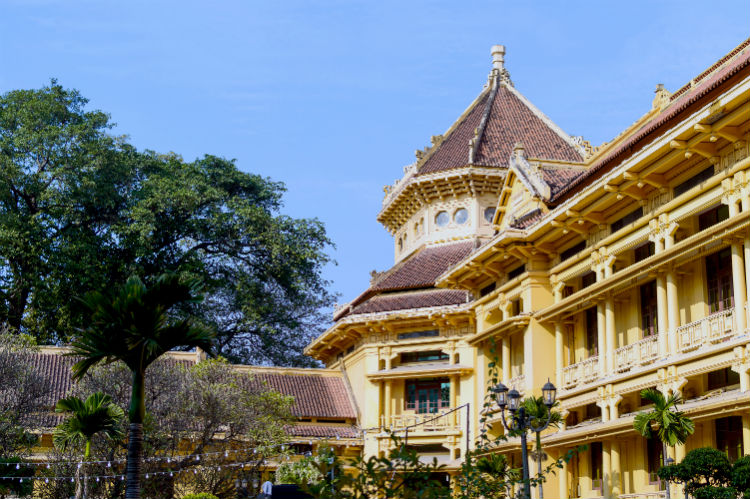
Another must-see (as well as a great place to get a good all-round introduction) is the National Museum of Vietnamese History. Found just down from the Opera House, exhibit highlights include the menacing sculpture of Quan Am (the Goddess of Mercy who has 1,000 eyes and arms), Hung era and Neolothic mortuaries, and items from Vietnam’s pre-history before the 1947 revolution that led to the country we know today.
The building itself is also a tremendous example of historical architecture. Built between 1925 and 1932, the architect Ernest Hebrard constructed what was to be the first building in Vietnam to blend together French and Chinese design elements.
Ngoc Son Temple
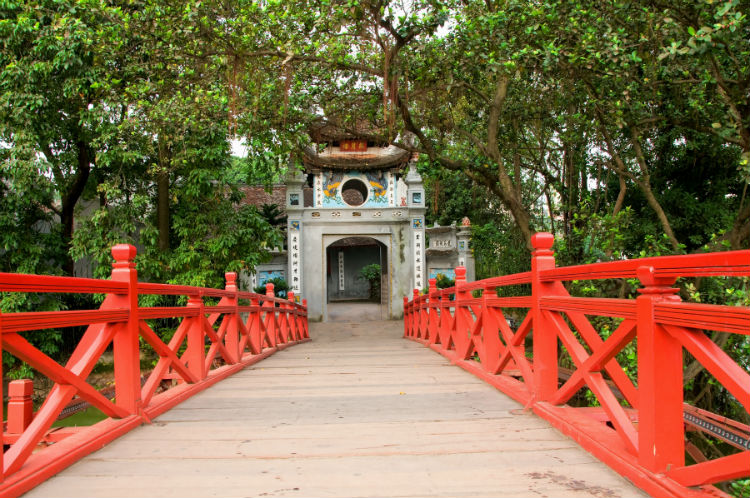
Arguably Hanoi’s most visited temple, you’ll find Ngoc Son Temple on a small island in the Hoan Kiem Lake accessible by a crimson red bridge. The name means ‘Temple of the Jade Mountain’ in English and was built in allegiance to General Tran Hung Dao (who defeated the Mongols in the 13th century), La To (patron saint of physicians) and the scholar Van Xuong.
Hoan Kiem Lake
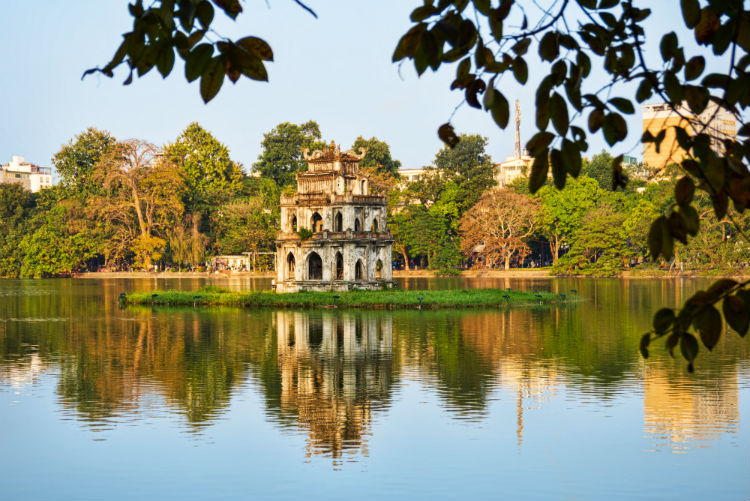
The lake that surrounds Ngoc Son Temple also has a fascinating backstory. Legend has it that in the 15th Century, Heaven sent a magical sword in the direction of Emperor Ly Thai To, who was to use it to protect Vietnam against the Chinese. But the sword was to be used only for the war, and after the war had ended a green turtle grabbed the sword off him and dived into the lake (the lake’s literal English translation is Lake of the Restored Sword).
Bach Ma Temple

Considered to be the oldest temple in the city, the Bach Ma Temple is unassuming at first but inside lies some of Hanoi’s most sought after historical remnants. When you move through its wooden doors, you’ll set your eyes on a statue of a white horse – with folklore suggesting that Emperor Ly Thai To built the temple in the 11th Century to honour a white horse that guided him to this site.
Located in the heart of the Old Quarter, the current structure and exterior walls were most recently reconstructed in 18th century (and the shrine to Confucius was added in 1839).
Quan Su Temple

Hanoi has been the centre for Vietnamese Buddhism for over 1,000 years and since 1858 the Quan Su Temple has been the Vietnam Buddhist Association’s Headquarters (the word Quan Su has origin in the old word for “embassy”). Originally the temple was used as a boarding house for Buddhist Ambassadors visiting from other countries, but in 1822 it was opened to the public and routinely filled with worshippers and travellers.
Trấn Quốc Pagoda
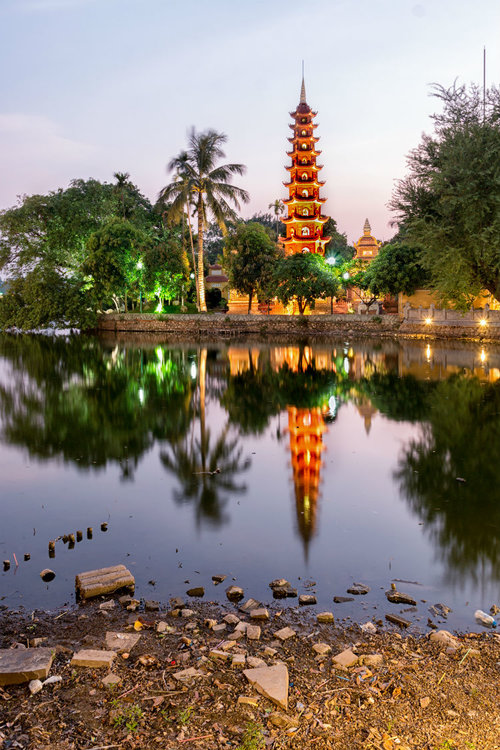
Boasting a lifespan of roughly 1,450 years, the Trấn Quốc Pagodais the oldest temple in Hanoi. Found on the south-eastern shore of Hanoi’s West Lake, monks have lived here for centuries teaching the public about Buddhist philosophy. Across the complex there is a wealth of Buddhist symbolism, including lotus flower statues, a stone wall with carvings of lotus flowers and a Bodhi tree. The temple also has nearby statues of gods and goddesses that were worshipped in Vietnam before Buddha.
Hanoi Opera House
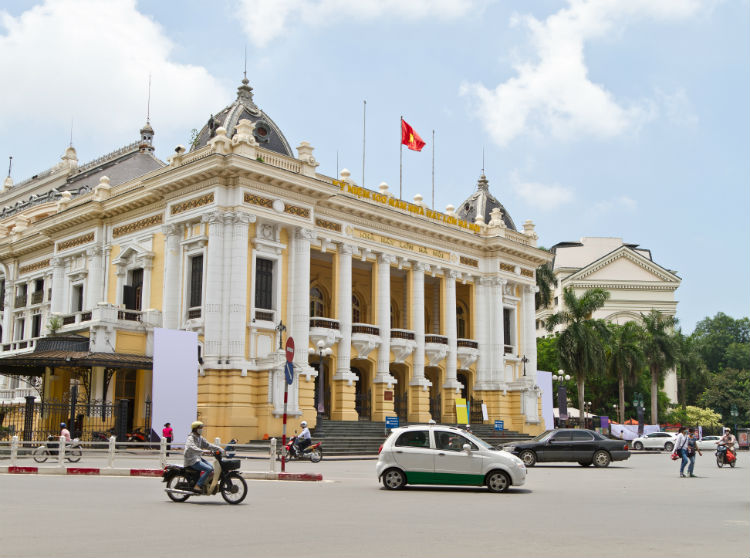
The Hanoi Opera house was constructed between 1901 and 1911 while it was still a French colony and was based on the architecture of the Palais Garnier in Paris. Today the stage hosts a mix of Vietnamese and Western ballets, opera shows and orchestras.
Imperial Citadel of Thang Long
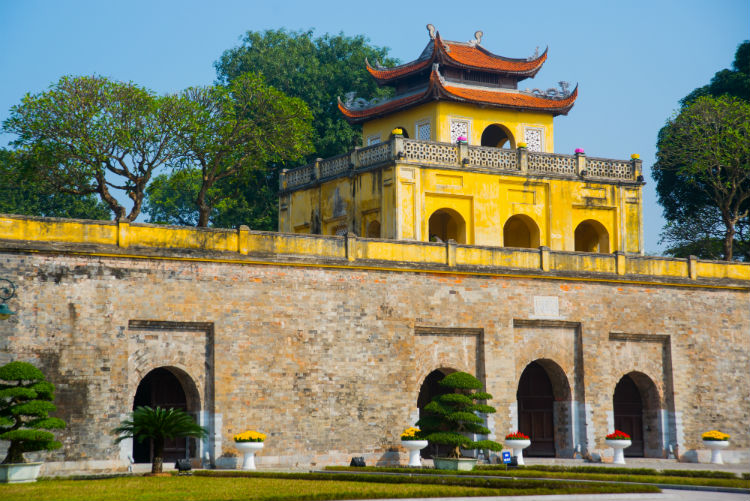
A UNESCO World Heritage, Hanoi’s Imperial Citadel was the hub of Vietnamese military power for over 1,000 years. The first royal enclosure was built by the Lý Dynasty and subsequently expanded by the Trần, Lê and finally the Nguyễn Dynasty. The Hanoi Flag Tower (built during the Nguyen Dynasty) is a symbol of the city.
Old East Gate
Hanoi once had sixteen medieval gates that guarded the city, however, this is the only one that remains today. The gate is of historical significance but isn’t the easiest to spot – it can be found on the narrow street corner between Hang Chieu and Dao Duy Tu Street. It is also sometimes referred to as Cua O Quan Chong.

